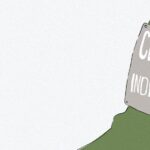We Need to Talk About John – Issue 14
In 1863, a British naval officer was given the command of the HMS Esk and ordered to the New Zealand Wars. His name was John Charles Fane Hamilton. The following year, the commander of the British forces in Aotearoa, General Duncan Cameron, who had been warring in Taranaki and trying to brutally eradicate the Kingitanga movement in the Waikato, decided to switch positions to Tauranga and attack Gate Pā in the Bay of Plenty. He was carried there aboard the HMS Esk. The attack was routed and while Cameron got away with his life, Hamilton did not.
In 1876, a new chairman of the Native Affairs Committee was appointed in New Zealand. He was a Scotland-born politician by the name of John Bryce who had immigrated to Aotearoa with his family in 1840. In 1879 he became the Minister For Native Affairs where he introduced legislation enabling the police to hold Māori without trial. In its time it would have been invisible as the institutional racism that it, by definition, is. It is obvious through our future-dated lens, not even Don Brash would back something so egregious today. Institutional racism is much easier to spot in hindsight.
In 1881, with his legislation on the books, John Bryce armed a division of 1600 troops. He marched them to the doorstep of a troublesome pā that was resisting the forced confiscation of the surrounding countryside. A pā that was dedicated to resistance without the use of violence. When the sun rose on November 5th the troops sacked the pā, raping women, burning houses, beating and arresting men. He imprisoned, for nearly a year and half, the two men who started a movement in this country and that echoed around the world through the century to come.
I do my banking with the Co-operative Bank. Whenever I visit their branch in central Hamilton I find myself looking for a carpark on Bryce Street. It is named for a man who defended his actions at Parihaka by blaming cultural and moral defects in the Māori character. History has vindicated the legacy of Te Whiti-O-Rongomai and Tohu Kākahi, and their example of non-violent protest is emulated around the world today. But I still do my banking on Bryce Street. In Hamilton.
Bryce was not the only man who has landed on the wrong side of history. The examples are numerous and their names can still be found adorning the cities and streets of their conquered territories. We grab lunch down on Grey Street, pass Von Tempsky on the way into town. On the very edge of our campus, on the roundabout by Gate 1 is Cameron Road.
Some will argue that we should not erase our history by taking these names (or in some cases, their statues) away. I would argue that we do not erase our history by taking these things away. History cannot be changed, but we can change which parts we celebrate. We can choose to focus on the aspirational parts of our national narrative. The stories that say something not just about where we have come from, but about where we are going. Waikato is rich with these stories. It is time we embraced them.





